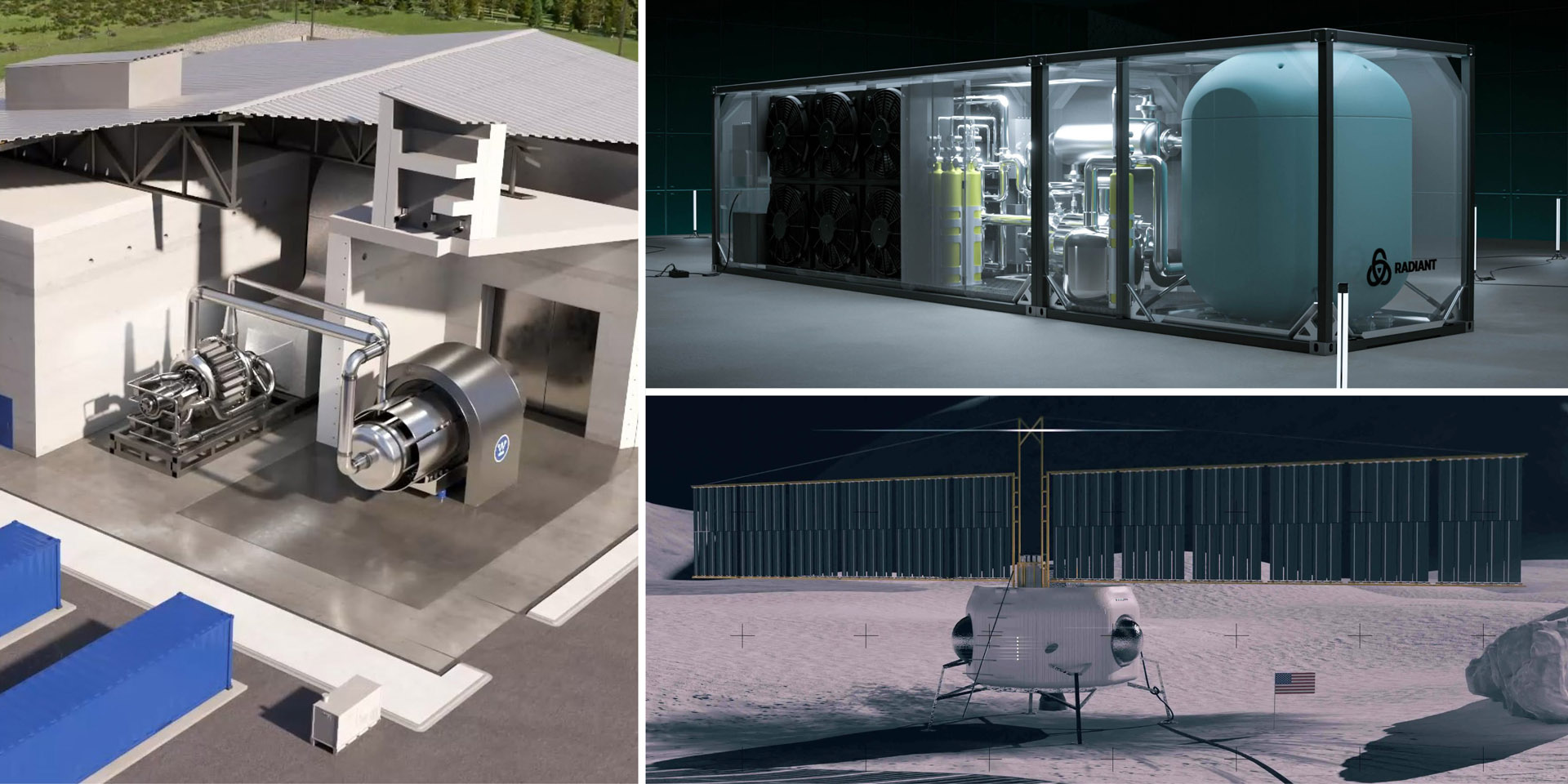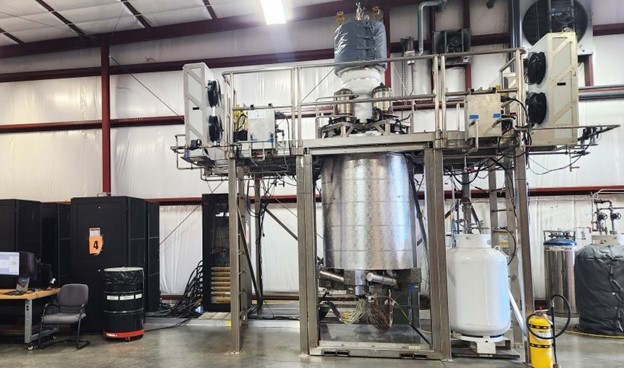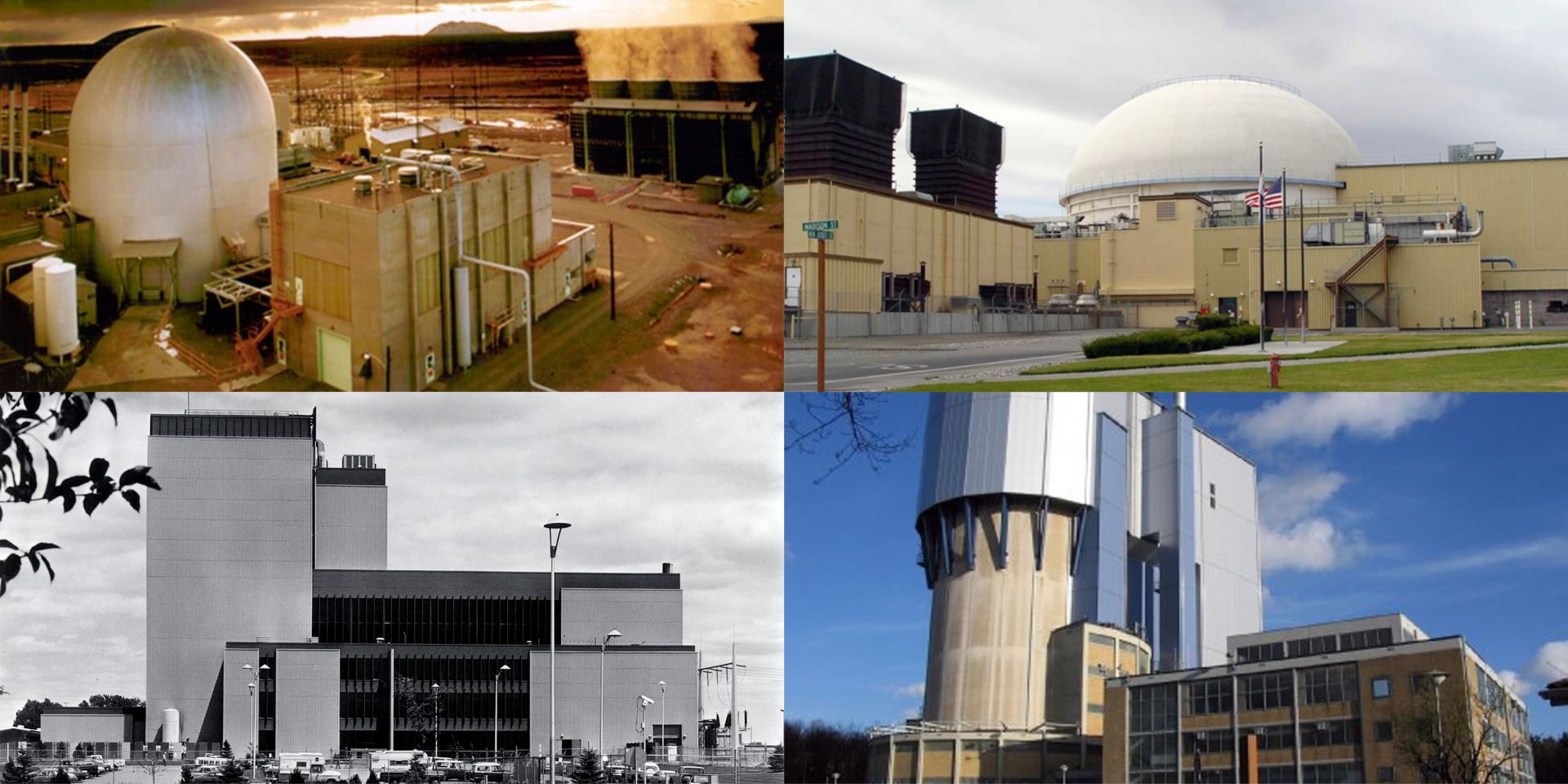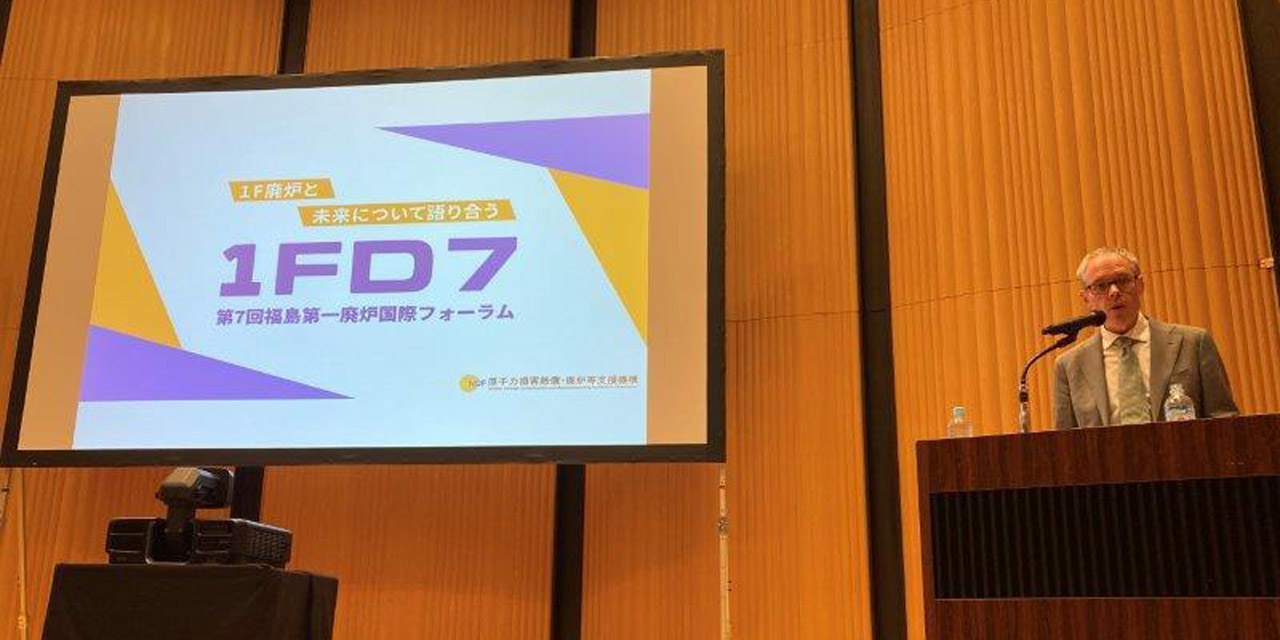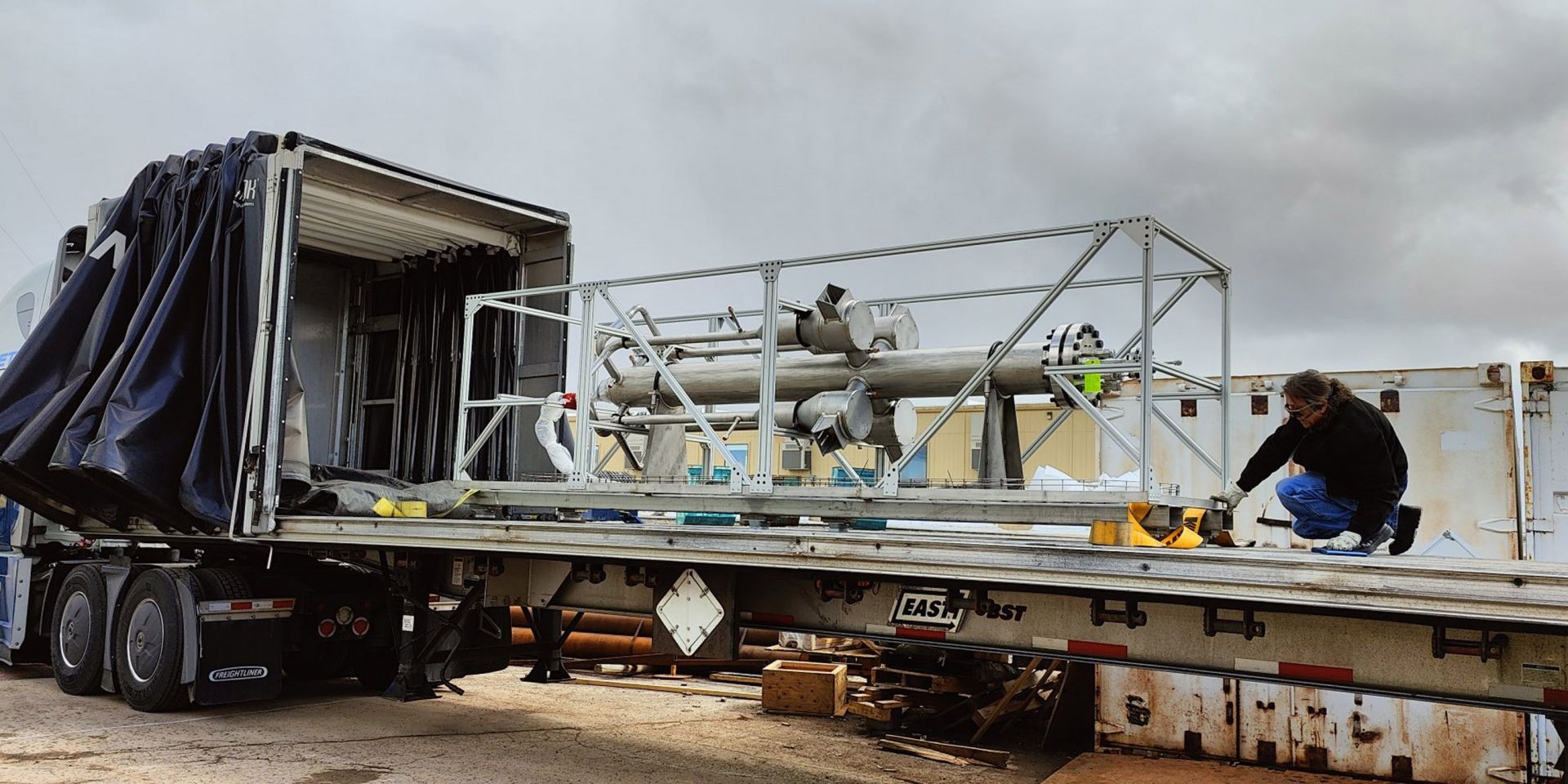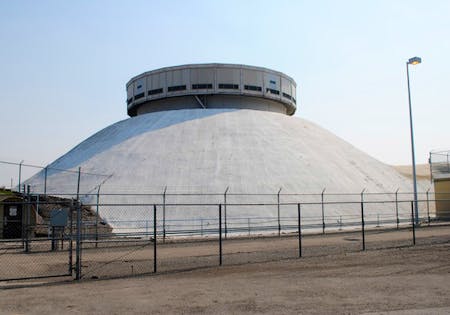Concept art of the six-module CFPP at INL, terminated before construction could begin. (Image: NuScale)
Utah Associated Municipal Power Systems (UAMPS) and NuScale Power announced November 8 that they have mutually agreed to end the Carbon Free Power Project (CFPP)—a plan to build a set of 77-MWe pressurized water reactors, called NuScale Power Modules, at Idaho National Laboratory. The reactors were intended to provide power to INL and UAMPS customers in Utah and surrounding states with an anticipated start date of 2029.
Crews demolish one of two massive steam condensers at the Naval Reactors Facility’s A1W prototype reactor facility in Idaho. Click photo to enlarge (Photo: DOE)
The Department of Energy’s Office of Environmental Management said that crews at the Idaho National Laboratory site are making “significant progress” decommissioning the Submarine 1st Generation Westinghouse (S1W) reactor, the prototype pressurized water reactor that supported the development of the USS Nautilus, the world’s first operational nuclear-powered submarine.
Idaho National Laboratory's TREAT reactor. (Photo: INL)
Researchers at Idaho National Laboratory have a new experimental tool to study nuclear fuel under simulated loss of coolant accident (LOCA) conditions in INL’s Transient Reactor Test (TREAT) Facility. A specialized experiment holder called a TWIST capsule holds a fuel sample surrounded by water, which can rapidly drain away during testing, simulating loss of coolant in a light water reactor environment.
The electrically heated PCAT replica of the MARVEL microreactor is installed and ready for testing at CEI’s facility in Pennsylvania. (Photo: DOE)
While initial operation of MARVEL, a tiny microreactor that will be installed and operated inside Idaho National Laboratory’s Transient Reactor Test (TREAT) Facility, might not occur until 2025, testing of a nonnuclear prototype is now under way at the New Freedom, Pa., manufacturing facility of Creative Engineers, Inc. (CEI). The Department of Energy announced the start of prototype testing on September 20.
ACU’s grand opening event for the Gayle and Max Dillard Science and Engineering Research Center. (Photo: ACU)
Abilene Christian University’s Gayle and Max Dillard Science and Engineering Research Center (SERC) has opened. SERC contains the Nuclear Energy eXperimental Testing Laboratory (NEXT Lab) and is the future home of one of the first advanced reactors in the United States. More than 300 people were on hand to celebrate the opening and tour the facility, including donors, government officials, and scientists from ACU and other research institutions.
DOE-EM senior advisor Ike White provided remarks to the audience during 7th International Forum on the Decommissioning of the Fukushima Daiichi Nuclear Power Station. (Photo: DOE)
Senior advisor Ike White and others with the Department of Energy’s Office of Environmental Management traveled to Japan this week to attend the 7th International Forum on the Decommissioning of the Fukushima Daiichi Nuclear Power Station.
The site in Piketon, Ohio, where Oklo plans to deploy two microreactors under an agreement with Southern Ohio Diversification Initiative. (Photo: Oklo)
Oklo Inc. and Centrus Energy announced a new memorandum of understanding on August 28 to support the deployment of Oklo’s microreactor design, dubbed Aurora, near the Piketon, Ohio, site where Centrus plans to operate a high-assay, low-enriched uranium (HALEU) enrichment demonstration under contract to the Department of Energy by the end of the year.
PCAT is prepared for transport from INL to Pennsylvania for testing. (Photo: INL)
As global concerns about climate change and energy sustainability intensify, the need for cleaner and more efficient energy sources is more critical than ever. Nuclear power consistently emerges as an important part of the solution, driving the development of innovative technologies. While numerous fission technologies were built and proven in the early days of nuclear energy, times and regulations have changed. Between the 1950s and mid-1970s, Idaho National Laboratory built 52 reactors—then paused for five decades. Can this nation return to the frontier once again, embarking on new fission technologies? With a mature regulatory environment and increasing public support, how quickly can a new non–light water system be deployed in modern times?
Work crews use light construction equipment to remove the final pieces of asphalt from one of the pads at the TSA-RE at INL. (Photo: DOE)
The Idaho National Laboratory is moving closer toward closing its largest building—which, at more than 316,000 square feet, could comfortably house a modern U.S. aircraft carrier, according to the Department of Energy.
The former Zero-Power Physics Reactor cell at INL’s Materials and Fuels Center could be home to the MCRE. (Photo: INL)



